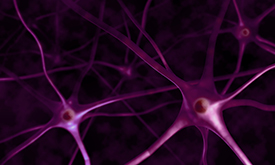The Training Page
FROM THE FELLOWS COMMITTEE
SIGs Facilitate Scientific Dialogue at the NIH
Science is continuously becoming more interdisciplinary and we are expected to obtain and retain both depth and breadth in our respective areas of expertise. One easy way to lessen the challenge is to participate in NIH’s Scientific Interest Groups (SIGs), which are assemblies of intramural and extramural scientists with common research interests. There are more than 90 different SIGs, so there’s something for every NIH researcher. Separate SIGS cover such topics as methods (flow cytometry or single-cell genomics), animal models (Drosophila or yeast), clinical-trials groups, patent law, sex and gender, and virology. SIGs offer many activities including seminars, LISTSERV mailing lists, symposia, poster sessions and lectures, and mentoring and career guidance for junior scientists. SIGs spread the word to members about the latest techniques and research findings and provide a forum for networking.

CREDIT: PATRICIA DZ, THINKSTOCK.COM
The Neurobiology Interest Group (NBIG), one of the more than 90 SIGs on the NIH campus, aims to promote interactions among scientists from different institutes and centers who are studying all aspects of the nervous system. Shown: neurons in the brain.
As new scientific trends arise and vanish, so do specific SIGs. The Neurobiology Interest Group (NBIG) is a prime example. Postdoctoral fellows Richa Lomash and Shireen Sarraf, both at the National Institute of Neurological Disorders and Stroke (NINDS), recently breathed new life into the group, which had been inactive for several years. NBIG is run by fellows and graduate students from various institutes and centers (ICs); NINDS senior investigator Katherine Roche is the group’s advisor.
“The whole team has been instrumental in the success of the series,” said Lomash. “NBIG was started with an aim to bring together the different aspects of neuroscience research being carried out across campus.”
The NBIG typically holds two seminars a month in order to extend speaking opportunities to as many trainees as possible. Given that the NIH is home to a large and diverse group of neuroscientists, the SIG attracts investigators from at least a dozen ICs. Seminars typically last 40 minutes and are followed by questions and an informal networking session. Even if you’re not located on the main campus, you can participate remotely by connecting through WebEx.
“The main aim of the [NBIG] seminar series is to provide a platform for graduate students and postdocs to share their exciting research stories to a varied audience,” said Lomash. And the presenters receive “critical and constructive feedback from on-campus experts.”
“We want it to be both a forum for scientific feedback [and] an opportunity to hone our presentation skills before going on the job market,” added Sarraf. “We want everyone to attend and hope to promote an environment for open scientific discussion and networking.”
Helping to organize the NBIG has been a rewarding and educational experience for Lomash and Sarraf, too. It “has given us [the] experience of organizing and running a committee as well as really understanding everything that goes on in the background of setting up something like this,” said Sarraf. “It’s been a great learning opportunity in that sense, and we encourage fellows who want to get involved to contact us.”
Given the wide variety of SIGs available, there is bound to be one that piques your interest. Check them out at https://oir.nih.gov/sigs.
For a list of SIGS, scientific LISTSERV newsletters, and intramural organizations, go to https://oir.nih.gov/sigs. SIGs form and evolve regularly as new scientific trends arise. Information about group activities or new groups is published in the NIH Catalyst at https://irp.nih.gov/catalyst under “The SIG Beat” department and on the DDIR Web Board (NIH only) at http://ddir.nih.gov. To learn how to set up a new SIG, email OIRinfo@mail.nih.gov.
This page was last updated on Wednesday, April 6, 2022
